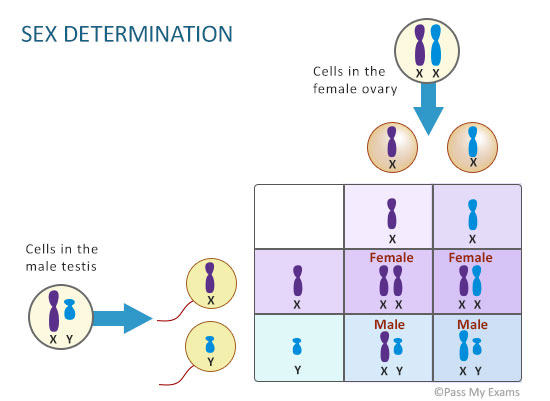Sex determination - Is it a boy or a girl?
In humans there are 46 chromosomes in the nucleus. When the sets of chromosomes from a human are lined up according to size, it can be seen that they exist in pairs. These are called homologous pairs because they are similar in structure. An image of such an arrangement of chromosomes is called a karyogram and the set of chromosomes is called the karyotype. In humans there are 23 pairs of chromosomes. The reason the chromosomes are in pairs is because one set of chromosomes comes from the female parent via the egg (the maternal chromosomes) and the other set of chromosomes comes from the male parent by way of the sperm (the paternal chromosomes). During fertilisation when the sperm cell fuses with the egg cell, the resulting cell is called a zygote and contains two sets of chromosomes. 22 of these pairs are matching but the last pair sometimes does not match. The last pair or pair 23 is called the sex chromosomes and it is these that determine the gender i.e. male or female of the offspring.
The diagrams below show a representation of the karyogram for humans. The image on the left shows the homologous sets as chromosomes and the image on the right is of the homologous chromosome pairs as chromatids just before nuclear division. It is the representation as chromatids which are the more recognisable structures normally used.
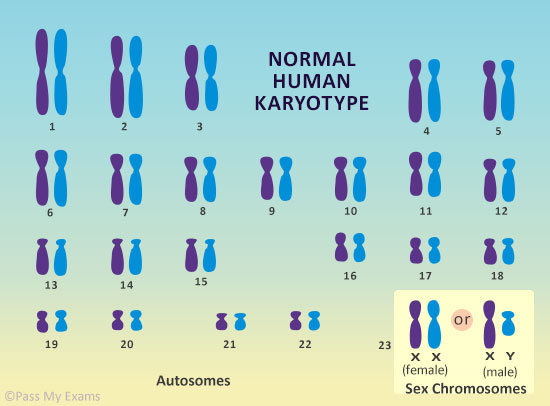
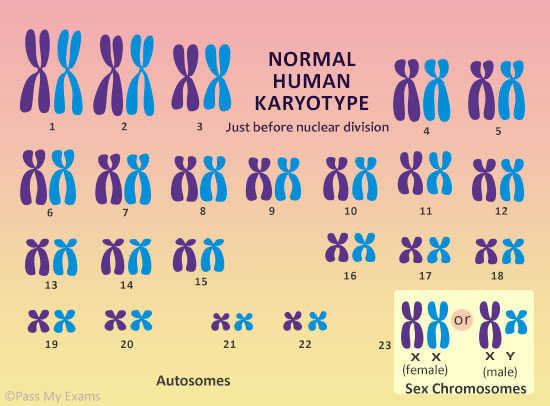


Females


Gametes
The cells involved in sexual reproduction are called gametes. The male gametes are sperm cells and are produced in the testes. The female gametes are egg cells and are produced in the ovaries.
Gametes are produced by meiosis and contain half the number of chromosomes (haploid) and therefore half the genetic information and only one sex chromosome.
| Male Testis |
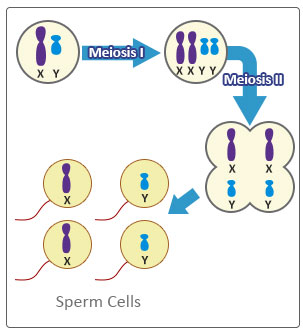 |
| Each cell undergoing meiosis in the testis will produce four daughter (sperm) cells with 23 chromosomes. Two of the four sperm cells contain the X chromosome and the other two contain the Y chromosome. |
| Female Ovary |
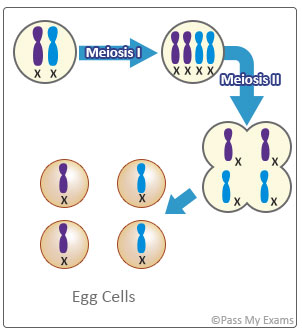 |
| Each cell undergoing meiosis in the ovary will produces four daughter (egg) cells with 23 chromosomes. All the eggs will carry the X chromosome. |
All the egg cells produced in the ovaries by meiosis contain the X chromosome. Half of the sperm cells produced in the testes carry the X chromosome and half the Y chromosome. At fertilisation, the egg may fuse with either a sperm cell carrying an X chromosome or a Y chromosome. Since there is an equal number of X and Y sperm cells, there is an equal chance of the child being either a girl or a boy.
